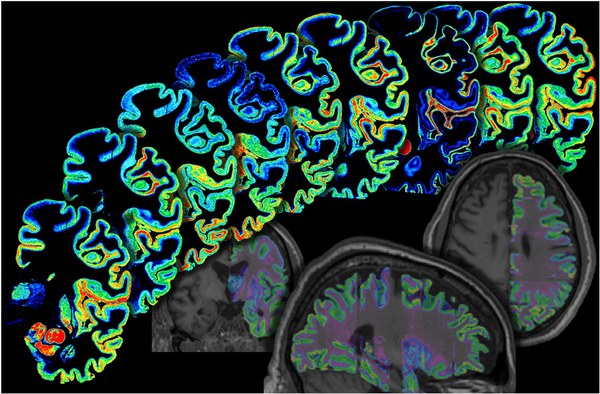Receptors
Neurotransmitters and their receptors represent the molecular basis for structure-function relationships in the brain. Each brain area contains nerve cells that express receptors for inhibitory, excitatory and modulatory neurotransmitters. Differences in the regional and laminar distribution patterns of a single receptor type can be analysed by quantitative in vitro receptor autoradiography.

Our working hypothesis is that the balance between the concentrations of the different receptor types in a brain region ("receptor fingerprint") is of crucial importance for the function of this brain region. Since these functions are made possible by interconnected brain regions which form complex neural systems, differences in "receptor fingerprints" would reflect different modalities (e.g., vision vs. hearing vs. touch), hierarchical organization principles (primary sensory, higher sensory, multimodal associative regions), and their importance for resting state systems (e.g., attention, executive function).



